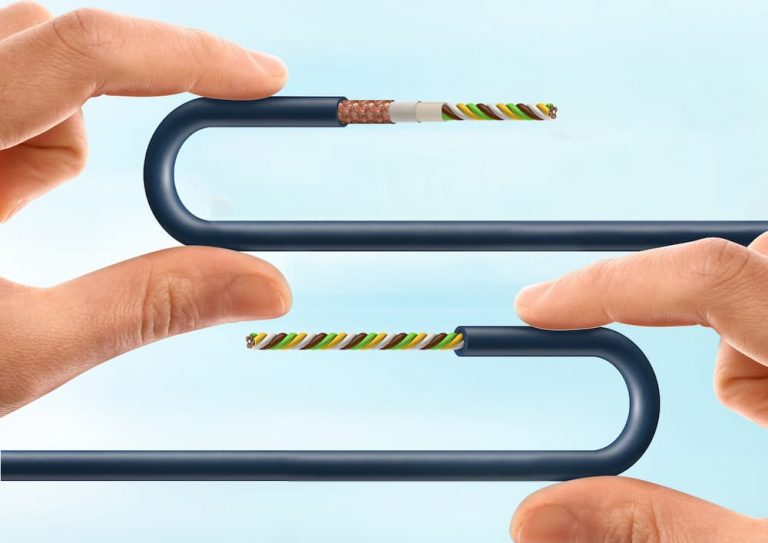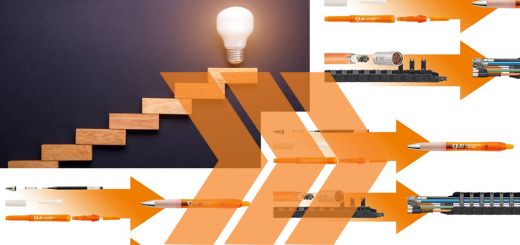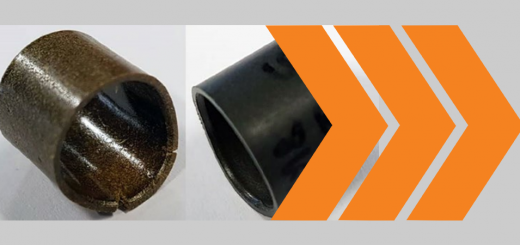Why is the minimum bending radius of a cable important?
Why is the minimum bending radius of a cable important? As the population grows, space is becoming more and more limited. This isn’t just true for physical living space but is also true for machines, systems and applications. Modern machines include significantly more technology today than they did 10 years ago, and the market now also has the added pressure of ensuring machines are more compact. This factor has a huge impact on the installation space for energy chains that protect power cables.
Within the energy chain an increasing number of cables for sensors and transmission must be placed together with motor cables. Sometimes, alongside the usual pairs for temperature sensors and/or brake, additional cables are required for bus or measuring systems. All of these components must have the smallest bend radii possible.
These machines are usually planned with designers who are aware of space limitations, however, working with space limitations is still not necessarily easy to achieve.

Problems with motor cables in small radii and the importance of understanding the minimum bending radius of a cable
For machines that require powerful motors, a bend radius of 175mm can be a challenge. A shielded 4G16mm² motor cable often has an outer diameter of between 22mm and 25mm. If you calculate the bending factor, it is found that with an outer diameter of 23mm, a bending factor of 7.6xd is produced with the above-mentioned chain radius. Of course, there are cables that are designed for such bend radii, however, it should be noted that static cables with large cross sections are very stiff due to their high copper content. This therefore results in the plastic materials becoming heavily stressed when used in the energy chain, which can lead to jacket breaks or core failures.
Another example is, a typical PUR servo cable (4G1.5 + (2×1.5)C)C has an outer diameter of between 11.5mm and 13mm. The usual bending factors of 10xd to 15xd result in a minimum bend radius of 115mm in the best case and a minimum bend radius of 195mm in the worst case. The installation space of the machine must correspond to these bend radii.
So, what can we do to prevent breakages and support these limited space requirements?
Make sure you have the right outer jacket
Applications with small bend radii represent high mechanical stress as mentioned and for this reason, we recommend cables with halogen-free TPE outer jackets, as these are the most durable and have significantly longer service life expectancy compared to PVC and PUR jackets. In addition, TPE cables offer high oil resistance and are resistant to a wide range of chemicals. The abrasion behaviour of TPE is also significantly better than that of PVC or PUR cables. All halogen-free TPE cables from igus® have UL approval and can therefore also be used in the USA.
Achieve the minimum bending radius of a cable with chainflex®
But what if there is still not enough space, or the requirements for movements are very high? This is exactly why igus® has introduced high-end TPE cables. In addition to the PVC and PUR outer jacket materials matched to the energy chain, igus® now offers the ideal alternative with the CF29.D servo cable series and the CF11.D measuring system cable series. These cables, equipped with a halogen-free TPE outer jacket and a specially matched stranding and shielding concept, offer a bending factor of only 6.8xd. And so, with a servo cable combination of (4G1.5 + (2×1.5)C)C with an outer diameter of 13mm, the bend radius of 115mm or 195mm from the previous example can be reduced to 85mm.
This results in a space saving of 220mm or 230% in the machine when using the CF29.D compared to the PUR servo cables commonly available on the market. This is because the space required is twice the radius of the energy chain plus the corresponding chain height.
Hopefully this blog will have helped identify some of the key reasons why understanding the minimum bending radius of a cable is important in applications. Visit igus.ca for more information on flexible cables and cable carriers.



